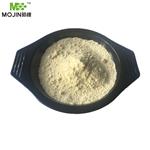Chemical Properties
tan or yellow crystalline powder
Uses
1,4-Cyclohexanedione is used in the preparation of 1,4 benzoquinone and bromoorganics. It is also used to study the influence of visible light on the bromate-1,4-cyclohexanedione-ferroin oscillating reaction. It plays a vital role in pharmaceuticals, plant growth regulator and as a conducting material.
Definition
ChEBI: 1,4-Cyclohexanedione is a cyclohexanedione with oxo substituents at positions 1 and 4.
Preparation
Synthesis of 1,4-cyclohexanedione: put diethyl succinylsuccinate into a flask, add a mixture of concentrated sulfuric acid, water and ethanol, reflux in oil solution for 5 days, cool, and neutralize to pH with ammonia water = 8; then extract 4 times with chloroform, and recover the chloroform to obtain the crude product; then the crude product is subjected to vacuum distillation, and the distillate is poured into cold petroleum ether, filtered, and air-dried to obtain 1,4-cyclohexanedi Ketone Products.
General Description
1,4-Cyclohexanedione(CHD) undergoes uncatalyzed oscillatory reactions during oxidation by acidic bromate in nitric acid and sulphuric acid solution. It reacts with acidic bromate to form 1,4-dihydroxybenzene which on further oxidation and bromination yields 1,4-benzoquinone and bromoorganics.
Pharmacology
The cyclohexanedione
(CHD) herbicides inhibit fatty acid synthesis
in plants by interfering with the activity of
the enzyme Acetyl-Coenzyme A Carboxylase (ACCase).
ACCase-inhibiting herbicides provide excellent control of
grass weeds in dicotyledonous and some grass crops. A
less-sensitive ACCase mediates the intrinsic resistance
of dicotyledonous plants to the AOPP and CHD herbicides
(34,35). Although grasses are target species of this
group of herbicides, not all are equally affected, and sensitivity
differences can occur between varieties or even
within a genus.





